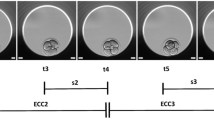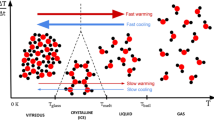Abstract
TEMPORARY elevation of the body temperature, resulting from climatic influences or infection, occurs in many mammals. Such hyperthermia is often harmless, but in the pregnant female it may be teratogenic, with particularly damaging effects on the brain of the developing embryo. The studies that have been made on experimentally induced hyperthermia and teratogenesis in animals are reviewed in ref. 1 and suggest that hyperthermia may also be teratogenic in man. The methods used to raise the temperature in experimental animals have included incubation of the whole animal2, injection of foreign protein3, short-wave diathermy4, immersion of the uterus in heated saline5,6, and microwave radiation of the uterus7. In most of these experiments the period of exposure to high temperature (often only 40–60 min) was limited by the tolerance of the animal and the need to avoid excessive resorption of the embryos. The temperature experienced by the embryos usually varied during treatment and could not be controlled precisely.
This is a preview of subscription content, access via your institution
Access options
Subscribe to this journal
Receive 51 print issues and online access
$199.00 per year
only $3.90 per issue
Buy this article
- Purchase on Springer Link
- Instant access to full article PDF
Prices may be subject to local taxes which are calculated during checkout
Similar content being viewed by others
References
Edwards, M. J., in Experimental Embryology and Teratology, I (edit. by Woollam, D. H. M., and Morriss, G. M.), ch. 5 (Elek Science, London, 1974).
Edwards, M. J., Teratology, 1, 173–177 (1968).
Brinsmade, A. B., and Rubsaamen, H., Bietr. Path. Anat., 117, 15–164 (1957).
Hofmann, D., and Dietzel, F., Geburtsch. Frauenheilk., 26, 378–390 (1966)
Skreb, N., and Frank, Z., J. Embryol. exp. Morph., 11, 445–457 (1963).
Skreb, N., C. r. hebd. Séanc. Acad. Sci. Paris, 261, 3214–3216 (1965).
Brent, R. L., and Wallace, J., Teratology, 5, 251 (abstr.)(1972).
New, D. A. T., Coppola, P. T., and Terry, S., Reprod. Fert., 35, 135–138 (1973).
Lowry, O. H., Rosebrough, N. J., Farr, A. L., and Randall, R. J., J. biol. Chem., 193, 265–275 (1951).
Author information
Authors and Affiliations
Rights and permissions
About this article
Cite this article
COCKROFT, D., NEW, D. Effects of hyperthermia on rat embryos in culture. Nature 258, 604–606 (1975). https://doi.org/10.1038/258604a0
Received:
Accepted:
Published:
Issue Date:
DOI: https://doi.org/10.1038/258604a0
Comments
By submitting a comment you agree to abide by our Terms and Community Guidelines. If you find something abusive or that does not comply with our terms or guidelines please flag it as inappropriate.



